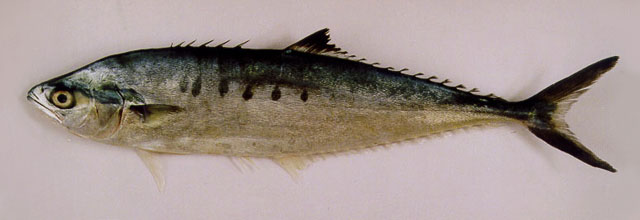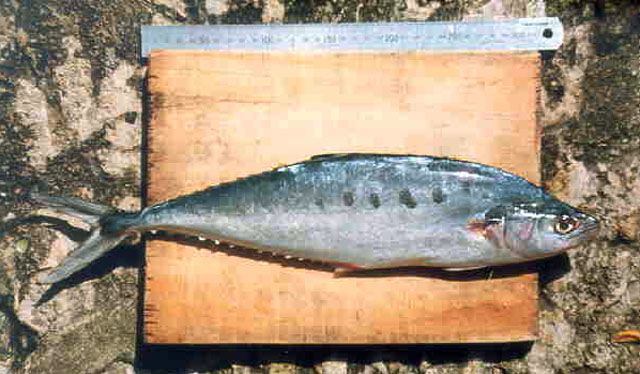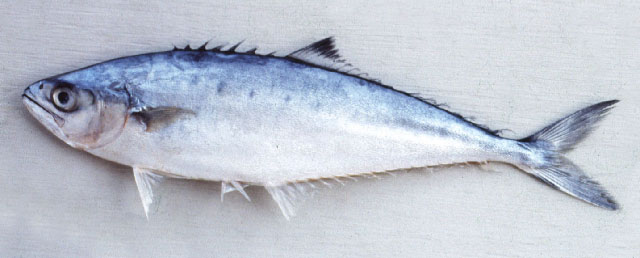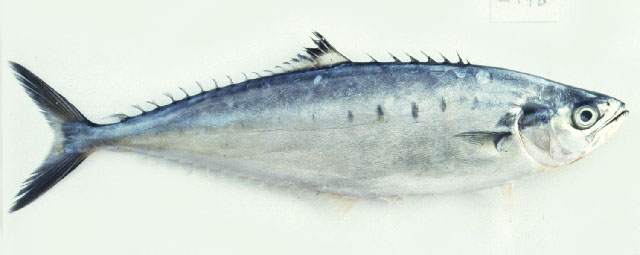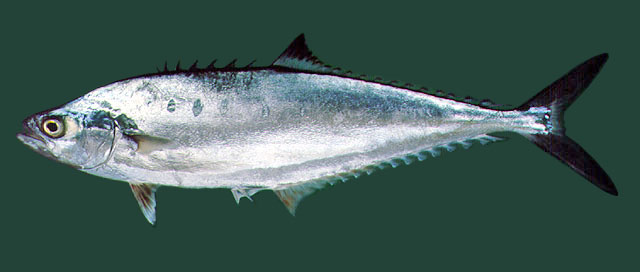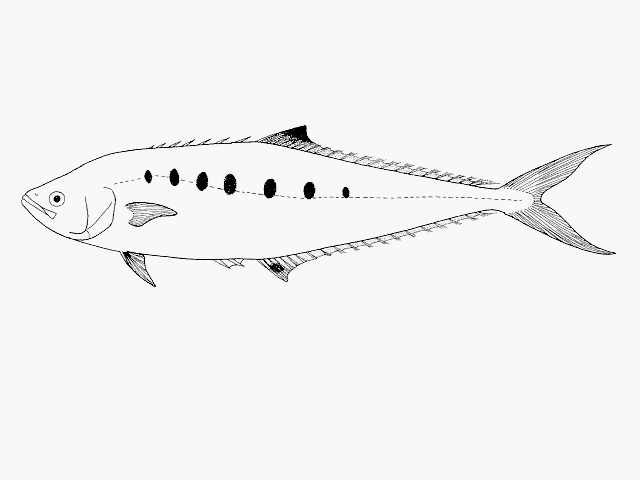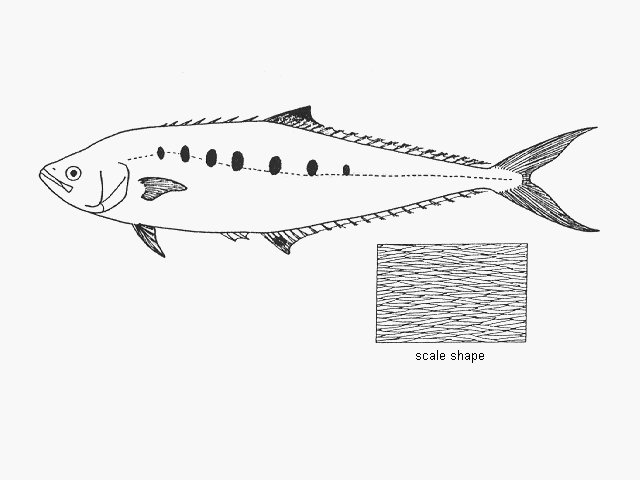Scomberoides
tol
(Cuvier,
1832)
Needlescaled queenfish
View all media / Upload your photos and videos
Expand all
Classification / Names
Teleostei (teleosts) > Carangiformes (Jacks) >
Carangidae (Jacks and pompanos)
> Scomberoidinae
Etymology: Scomberoides: Greek, skombros = tunny or mackerel, 1623 + Greek, oides = similar to (Ref. 45335).
More on author:
Cuvier.
Environment / milieu / depth range / climate zone / distribution range
Distribution
Indo-West Pacific: widespread throughout the Indian Ocean from Natal, South Africa northward and from Japan south to Australia and east to Fiji.
Maps

Scomberoides tol / Native range
AquaMaps Data sources:
GBIF
OBIS
This map was computer-generated and has not yet been reviewed.

Scomberoides tol / Suitable habitat
AquaMaps Data sources:
GBIF
OBIS
This map was computer-generated and has not yet been reviewed.

Scomberoides tol / Point map
AquaMaps Data sources:
GBIF
OBIS
This map was computer-generated and has not yet been reviewed.

Scomberoides tol / Year 2050
AquaMaps Data sources:
GBIF
OBIS
This map was computer-generated and has not yet been reviewed.
Length at first maturity / Size / Weight / Age
Short description
Dorsal spines (total): 7 - 8; Dorsal soft rays (total): 19 - 21; Anal spines: 3; Anal soft rays: 18 - 20. Dorsally bluish, ventrally silver or white, with 5-8 vertically oblong or oval black spots5-8, the first 4-5 intersect the lateral line, dorsal fin lobe black outer half (Ref. 3197, 90105). Body strongly compressed, oblong and elliptical, dorsal and ventral profiles equally convex. In adults, upper jaw extends to posterior edge of pupil. Soft rays of posterior dorsal and anal fins consist of semi-detached finlets (Ref. 90102).
Biology
Main reference
Paxton, J.R., D.F. Hoese, G.R. Allen and J.E. Hanley 1989 Pisces. Petromyzontidae to Carangidae. Zoological Catalogue of Australia, Vol. 7. Australian Government Publishing Service, Canberra, 665 p. (Ref. 7300)
IUCN Red List Status (Ref. 125652)
Least Concern (LC); date assessed: March 09 2015
CITES (Ref. 131153)
Not Evaluated
CMS (Ref. 116361)
Not Evaluated
Threat to humans
Venomous (Ref. 12484)
More information
- Countries
- FAO areas
- Ecosystems
- Occurrences
- Introductions
- Stocks
- Ecology
- Diet
- Food items
- Food consumption
- Ration
- Common names
- Synonyms
- Metabolism
- Predators
- Ecotoxicology
- Reproduction
- Maturity
- Spawning
- Spawning aggregation
- Fecundity
- Eggs
- Egg development
- Age/Size
- Growth
- Length-weight
- Length-length
- Length-frequencies
- Morphometrics
- Morphology
- Larvae
- Larval dynamics
- Recruitment
- Abundance
- References
- Aquaculture
- Aquaculture profile
- Strains
- Genetics
- Allele frequencies
- Heritability
- Diseases
- Processing
- Mass conversion
- Vision
- Pictures
- Stamps, Coins Misc.
- Sounds
- Ciguatera
- Speed
- Swim. type
- Gill area
- Otoliths
- Brains
Estimates based on models
Preferred temperature (Ref. 123201): 23.5 - 28.7, mean 27.8 °C (based on 381 cells).
Phylogenetic diversity index (Ref. 82804): PD50 = 0.5625 [Uniqueness, from 0.5 = low to 2.0 = high].
Bayesian length-weight: a=0.00832 (0.00656 - 0.01055), b=2.89 (2.82 - 2.96), in cm total length, based on LWR estimates for this species (Ref. 93245).
Trophic level (Ref. 69278): 4.1 ±0.6 se; Based on diet studies.
Generation time: 1.1 ( na - na) years. Estimated as median ln(3)/K based on 1 growth studies.
Resilience (Ref. 120179): High, minimum population doubling time less than 15 months (K=0.98).
Fishing vulnerability (Ref. 59153): Low vulnerability (24 of 100).
Climate vulnerability (Ref. 125649): High to very high vulnerability (71 of 100).
Price category (Ref. 80766): Medium; Questionable: based on ex-vessel price for species in this genus.
Nutrients (Ref. 124155): Calcium = 62.6 [35.3, 131.5] mg/100g; Iron = 1.04 [0.58, 1.82] mg/100g; Protein = 20.2 [19.2, 21.3] %; Omega3 = 0.165 [0.105, 0.281] g/100g; Selenium = 40.7 [22.1, 78.0] μg/100g; VitaminA = 44.8 [14.0, 145.5] μg/100g; Zinc = 1 [1, 1] mg/100g (wet weight);

